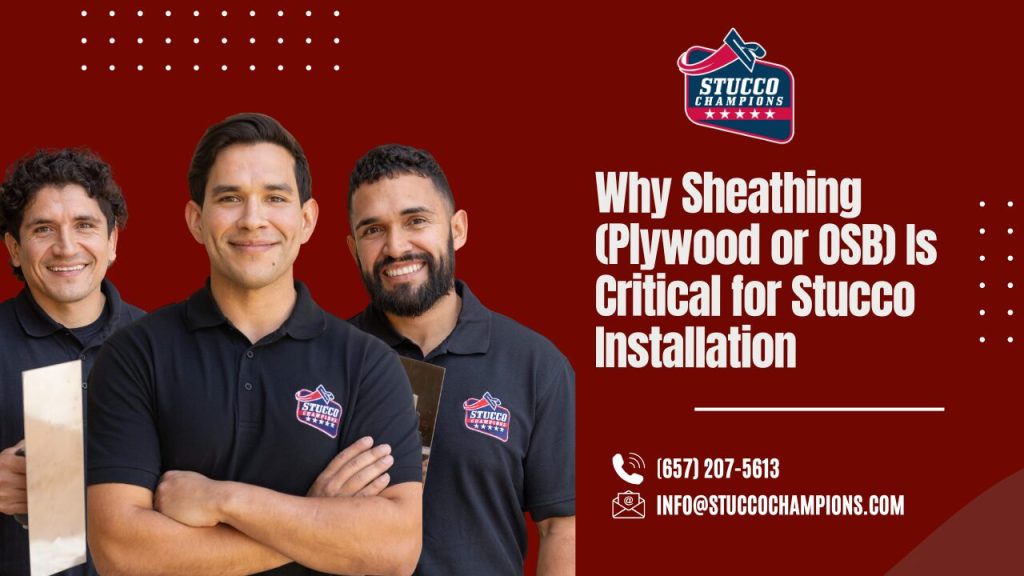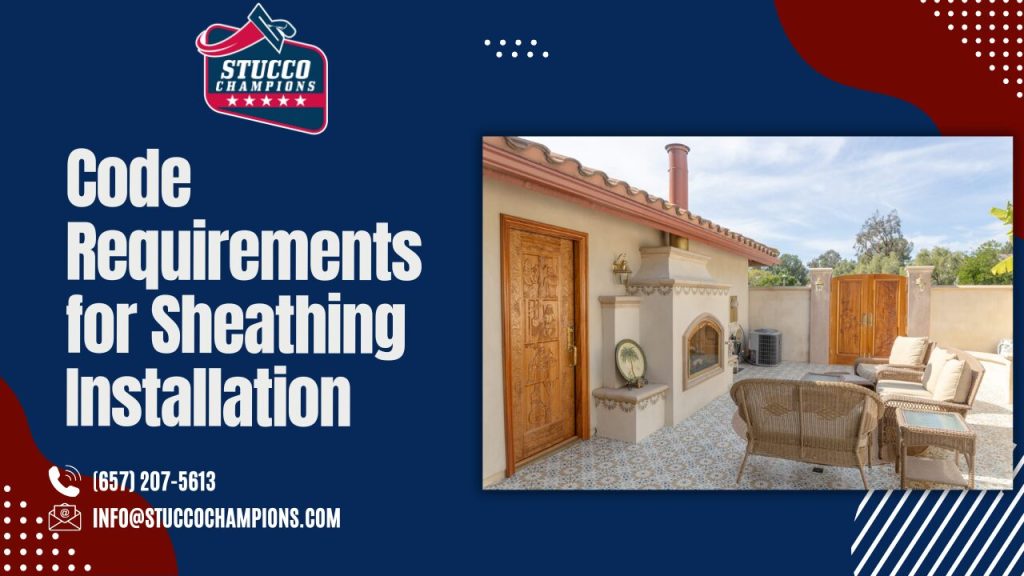Why Sheathing (Plywood or OSB) Is Critical for Stucco Installation
If you’re planning a stucco project, it’s easy to focus on textures and colors—but what’s underneath the stucco matters just as much. A strong, stable foundation starts with sheathing, typically made from plywood or oriented strand board (OSB). This hidden layer plays a vital role in the performance, durability, and appearance of your stucco finish.
What Is Sheathing?
Sheathing is the wood-based paneling installed over a building’s wall framing. It creates a solid base for the stucco system and helps tie the structure together. The two most commonly used sheathing materials in stucco projects are:
-
Plywood: A layered wood panel that is strong, dimensionally stable, and moisture-resistant.
-
OSB (Oriented Strand Board): An engineered panel made from compressed wood strands and resin, known for its affordability and structural strength.
Both options are accepted under national building codes for exterior cement plaster applications.
Why Sheathing Matters
Proper sheathing provides the foundation for a successful stucco system. It serves several important functions:
-
Structural support: Gives strength to the wall and a firm surface for fastening lath and weather-resistant barriers.
-
Surface consistency: Creates a flat, stable surface for stucco to adhere evenly.
-
Moisture management: When paired with a properly installed weather-resistant barrier (WRB), sheathing helps manage moisture that gets behind the exterior finish.
According to the International Residential Code (IRC) and ASTM C1063, wood structural sheathing like plywood or OSB must be used in conjunction with WRB and installed following spacing and fastening guidelines.
Plywood vs OSB: What’s the Difference?
Both plywood and OSB are reliable choices for stucco sheathing, but there are some key differences:
| Feature | Plywood | OSB |
|---|---|---|
| Moisture Resistance | Less likely to swell or delaminate | Can swell at edges if exposed too long |
| Durability | Excellent in wet climates | Performs well with proper WRB |
| Cost | Generally more expensive | More affordable |
| Weight & Size | Lighter, easier to handle | Larger sheets, fewer seams |
In wetter regions, plywood may be preferred for its superior moisture tolerance. In drier or temperate climates, OSB can perform just as well when protected properly.
Code Requirements for Sheathing Installation
To ensure safety and performance, sheathing must meet specific building code standards. Here are some general guidelines:
-
Minimum thickness: 7/16 inch for both plywood and OSB
-
Spacing between panels: 1/8 inch gap to allow for expansion
-
Fastening: Use corrosion-resistant nails or screws as specified in code
-
Orientation: Panels may be installed vertically or horizontally; joints should be staggered
These requirements align with IRC Section R703.6 and ASTM C1063, both of which govern the proper installation of stucco over wood-framed construction.
Quick Sheathing Checklist
✔ Use minimum 7/16″ thick panels
✔ Leave 1/8″ spacing between sheets
✔ Install panels flush and level
✔ Stagger joints for added strength
✔ Use code-compliant fasteners
✔ Cover with an approved weather-resistant barrier
Our Process at Stucco Champions
At Stucco Champions, we start every stucco project with a firm foundation—literally. Whether using plywood or OSB, our crews follow all local building codes, national standards, and manufacturer specs. We never rush through installation or ignore the fine details that impact long-term performance. A high-end stucco finish is only as good as the structure behind it.
Ready to Simplify Your Stucco Work?
Contact Stucco Champions today for a free consultation!
Visit us at Stucco Champions for helpful resources and to learn more about our services.


